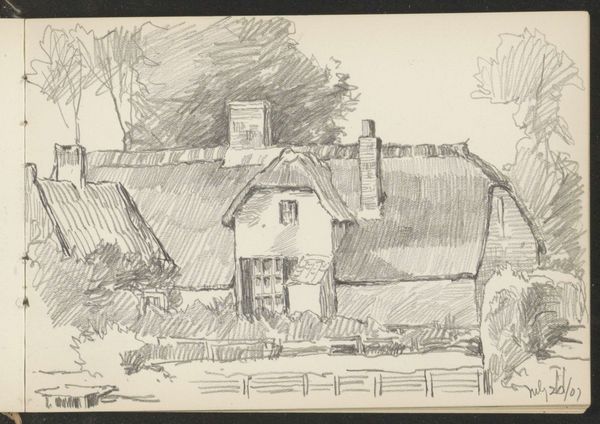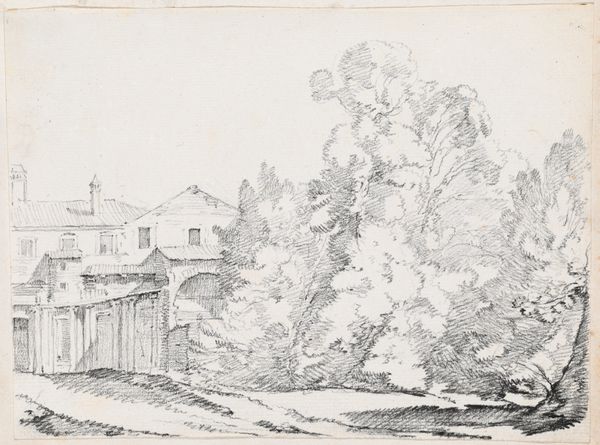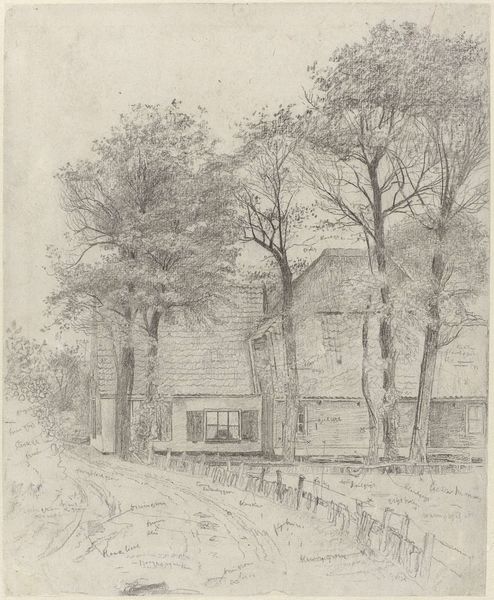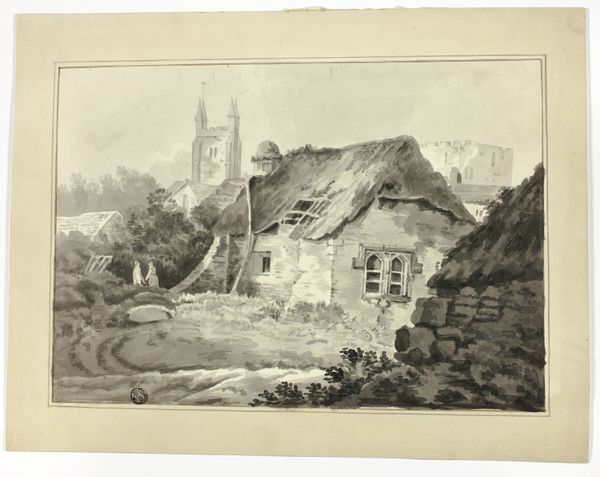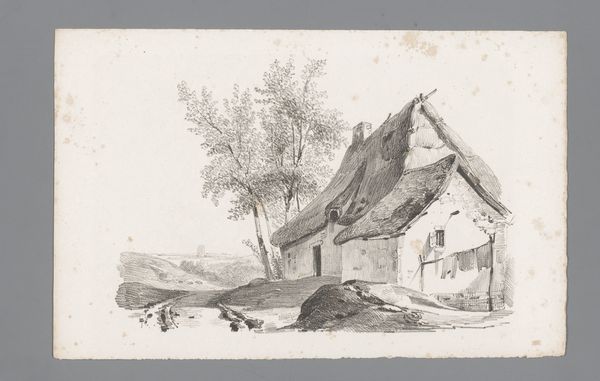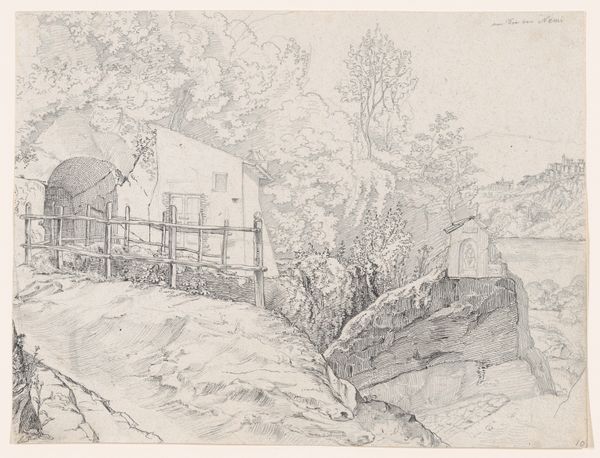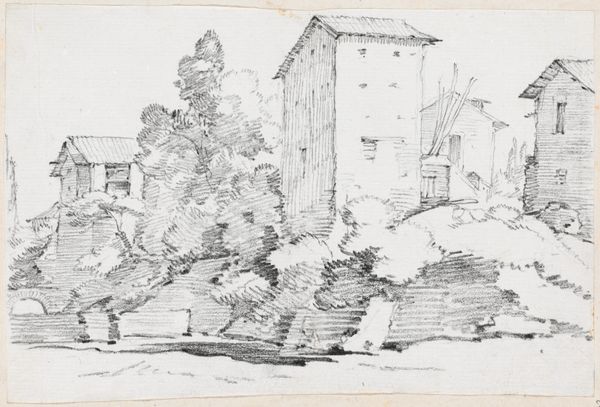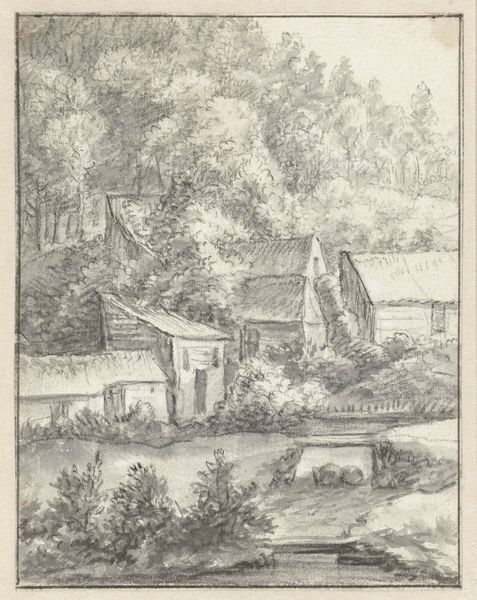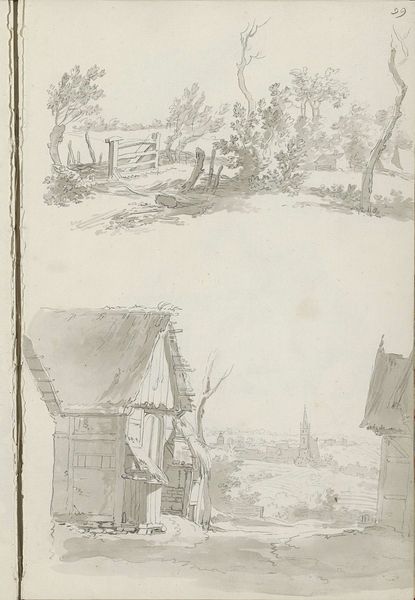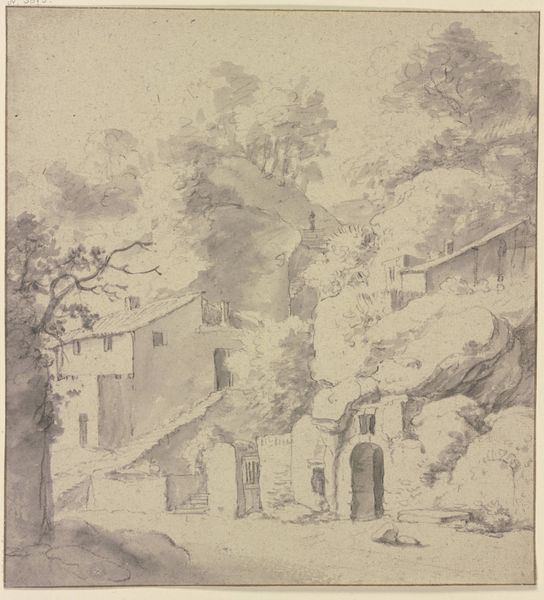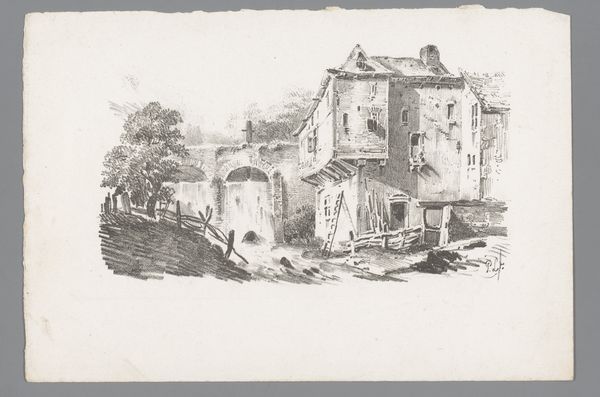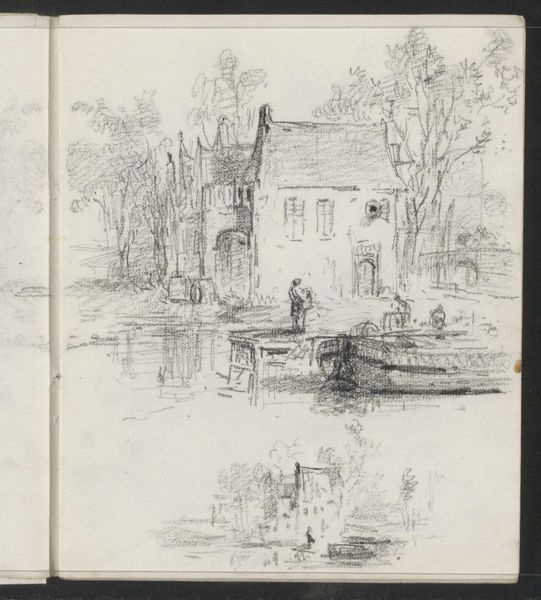
drawing, pencil
#
architectural sketch
#
drawing
#
quirky sketch
#
mechanical pen drawing
#
pen sketch
#
sketch book
#
landscape
#
personal sketchbook
#
sketchwork
#
pen-ink sketch
#
pencil
#
sketchbook drawing
#
cityscape
#
sketchbook art
#
modernism
#
realism
Copyright: Rijks Museum: Open Domain
Editor: This drawing, "Geulhemmermolen," from 1928 by Otto Verhagen, it appears to be a pencil and ink sketch, probably from a personal sketchbook. It’s such a quaint and charming depiction of what I assume is a watermill… something about the line work is very soothing. How would you interpret this work within the context of its time? Curator: Given its creation in 1928, we can look at this piece through the lens of the burgeoning modernist movement and the role of realism, or representational art, within that changing art world. Consider how the rise of industrialization impacted artists. Did they turn away from depicting the traditional, or did they attempt to preserve a sense of place in their rapidly changing world? Editor: That’s a great point. It definitely feels like there's a reverence for the past, capturing a traditional structure in a rapidly modernizing world. Do you think that choosing such a subject matter – a rural watermill – could be a conscious commentary on industrialization? Curator: It's highly plausible. Verhagen may be presenting an idealized vision of rural life, a visual argument for the preservation of tradition against the encroaching tide of industrial society. Consider how this image might have resonated with its viewers. Was it a nostalgic escape or a call to action? Also, note that the style is quite direct, it doesn't aim for idealization. The architectural interest takes more space, in my reading, than the will to transmit "feeling". Editor: That makes perfect sense! The lack of romanticization definitely makes it feel more like documentation. So, thinking about its public role, this drawing could serve both as a record and a quiet statement. Curator: Precisely. The Geulhemmermolen drawing may have acted as a reminder of simpler times and an affirmation of cultural identity amid larger socio-political shifts. These landscapes show people where they came from and maybe shape a shared cultural understanding. Editor: That really changes how I view the work. It’s more than just a pretty sketch; it's a historical document with social implications. Thanks for pointing that out! Curator: Indeed. By examining its place in the visual landscape of the time, we understand the complex interplay between art, history, and society. It’s amazing how much we can discover when we analyze art within its context!
Comments
No comments
Be the first to comment and join the conversation on the ultimate creative platform.
